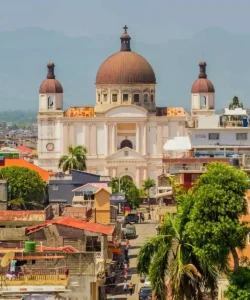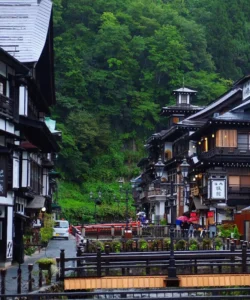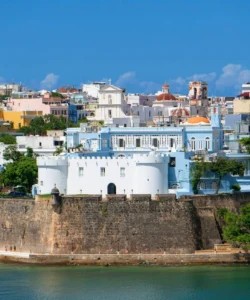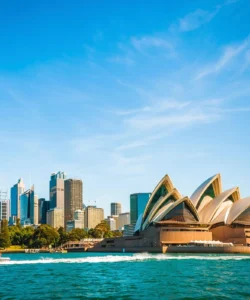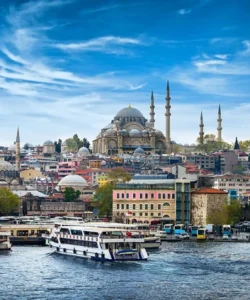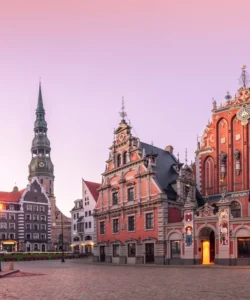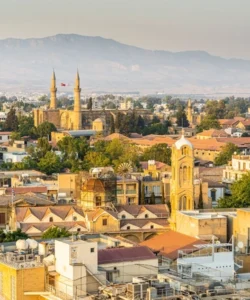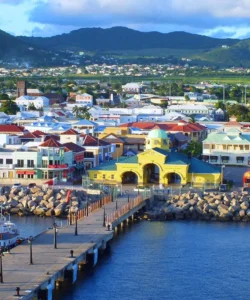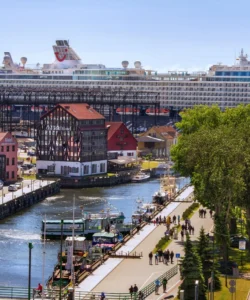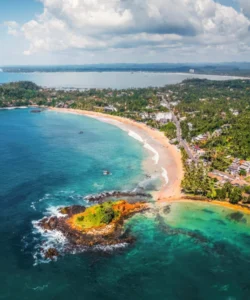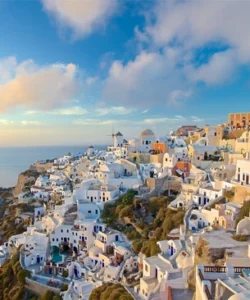The U.S. Virgin Islands (USVI) are a group of islands in the Caribbean that are an insular area of the United States. Comprising the main islands of Saint Croix, Saint John, and Saint Thomas, along with many smaller islets and cays, the USVI are known for their pristine beaches, turquoise waters, vibrant coral reefs, and historical significance. They offer a unique blend of American familiarity with a distinct Caribbean charm.
![]()
Area and Population:
The total land area of the U.S. Virgin Islands is approximately 346.36 sq. km (133.73 sq. mi). Saint Croix is the largest island, followed by Saint Thomas and Saint John. As of 2023, the estimated population was around 98,799 people.
Language:
The official language is English, and it is universally spoken. Spanish and Creole dialects are also spoken by some residents.
Currency:
The official currency is the United States Dollar (USD).
Religion:
The predominant religion is Christianity, with various denominations present, including Baptist, Roman Catholic, Anglican, and Methodist.
Capital:
The capital city is Charlotte Amalie, located on Saint Thomas. It is also the largest city and a major port for cruise ships.
Major Cities/Towns:
Besides Charlotte Amalie on Saint Thomas, other significant towns include Christiansted and Frederiksted on Saint Croix, and Cruz Bay on Saint John.
Attractions:
The U.S. Virgin Islands offer a wide array of attractions, catering to various interests:
- Beaches: The islands boast numerous stunning beaches.
- Magens Bay (St. Thomas): A world-famous, crescent-shaped beach known for its calm, crystal-clear waters, ideal for swimming and snorkeling.
- Trunk Bay (St. John): Often cited as one of the most beautiful beaches in the world, famous for its underwater snorkeling trail.
- Buck Island Reef National Monument (St. Croix): A pristine underwater park accessible by boat, offering exceptional snorkeling around a designated trail.
- Honeymoon Beach (St. John): A secluded and tranquil beach, perfect for relaxation.
- Virgin Islands National Park (St. John): Covering more than half of the island of St. John, this park protects pristine beaches, coral reefs, historic ruins, and lush forests, offering hiking trails and snorkeling opportunities.
- Charlotte Amalie (St. Thomas): Known for its historic Danish colonial architecture, duty-free shopping, and lively harbor. Visitors can explore Government House, Fort Christian, and the famous 99 Steps.
- Christiansted National Historic Site (St. Croix): Preserves colonial Danish architecture and historical structures, including Fort Christiansvaern.
- Cruz Bay (St. John): A charming town with shops, restaurants, and a ferry terminal for inter-island travel.
- Coral World Ocean Park (St. Thomas): An marine park with an underwater observatory, shark encounters, and sea lion swims.
- Mahogany Run Golf Course (St. Thomas): Known for its challenging “Devil’s Triangle” holes and breathtaking ocean views.
- Cane Bay Wall (St. Croix): A renowned dive site with a dramatic drop-off, offering incredible visibility and diverse marine life for divers.
Natural Wonders:
The natural beauty of the USVI is primarily found in its diverse ecosystems:
- Coral Reefs: Extensive and healthy coral reef systems surrounding the islands, supporting a rich variety of marine life.
- Lush Hills and Forests: Particularly on St. John within the National Park, offering scenic views and hiking opportunities.
- Mangrove Lagoons: Important ecosystems providing habitats for birds and marine life.
Architecture:
The architecture in the U.S. Virgin Islands reflects its colonial past, particularly Danish influence, mixed with Caribbean styles.
- Danish Colonial: Evident in the capitals of Charlotte Amalie (St. Thomas) and Christiansted (St. Croix), characterized by red-roofed buildings, arched walkways, and narrow streets. Examples include Fort Christian, Government House, and historic warehouses.
- Stone and Brick Construction: Many historic buildings were built with local stone and imported brick, designed to withstand hurricanes and provide ventilation.
- Caribbean Vernacular: Traditional houses often feature wooden construction, vibrant colors, and verandas, adapted for the tropical climate.
- Modern Resort Architecture: Newer hotels and resorts blend contemporary designs with Caribbean aesthetics, often incorporating open-air spaces and maximizing ocean views.
Roads:
The U.S. Virgin Islands have a network of paved roads, but they can be narrow, winding, and steep, especially outside of the main towns. Driving is on the left-hand side of the road, which can be disorienting for visitors from the mainland U.S. who are used to driving on the right. Speed limits are generally low, and drivers should be cautious due to local driving habits and varying road conditions.
Hotels:
The USVI offer a wide range of accommodation options, from luxurious resorts and boutique hotels to charming guesthouses and villa rentals. Some prominent hotels include:
- The Ritz-Carlton, St. Thomas
- Secret Harbour Beach Resort & Condominiums (St. Thomas)
- Frenchman’s Reef & Morning Star Beach Resort (St. Thomas)
- The Buccaneer (St. Croix): A historic and well-regarded resort.
- Divi Carina Bay Beach Resort & Casino (St. Croix)
- The Westin St. John Resort Villas (formerly The Westin St. John Resort)
- Margaritaville Vacation Club by Wyndham St. Thomas
Restaurants:
The culinary scene in the U.S. Virgin Islands is diverse, blending traditional Caribbean flavors with American, European, and international influences. Fresh seafood is a staple.
- Old Stone Farmhouse (St. Thomas): Known for its fine dining in a historic setting, offering a blend of Caribbean and international cuisine.
- Duggan’s Reef (St. Croix): A popular beachfront restaurant known for its fresh lobster and relaxed atmosphere.
- The Lime Inn (St. John): A long-standing favorite for fresh seafood and Caribbean dishes in a casual outdoor setting.
- Havana Blue (St. Thomas): Offers Latin-Asian fusion cuisine with stunning ocean views.
- Savant (St. Croix): Known for its creative menu and intimate ambiance.
- Many casual eateries and beach bars offer local specialties like conch fritters, johnnycakes, and fresh catch of the day.
Cuisine:
U.S. Virgin Islands cuisine is a vibrant mix of African, European (especially Danish), and local Caribbean traditions. It emphasizes fresh seafood, tropical fruits, and hearty stews.
- Conch: Prepared in various ways, including stewed, fried (fritters), or in salads.
- Fish and Fungi: A popular local dish consisting of stewed fish (often snapper or mahi-mahi) served with “fungi,” a cornmeal mixture similar to polenta.
- Callaloo: A hearty soup made with leafy greens (like taro or spinach), okra, and sometimes crab or other meat.
- Pâté: Fried savory turnovers filled with various ingredients like beef, conch, or saltfish.
- Goat Water: A savory goat stew, particularly popular on St. Croix.
- Fried Plantains: Both green (tostones) and ripe plantains are commonly served.
- Johnnycakes: A slightly sweet fried bread, often served as a side.
- Fresh Tropical Fruits: Mangoes, papayas, soursop, and passion fruit are abundant.
- Rum: As with many Caribbean islands, rum is a significant part of the local culture, with various rum drinks and distilleries.





















